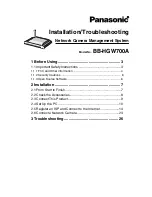
6RL SERIES OPERATION MANUAL
SECTION 6: FRONT PANEL OPERATION
Entire Contents Copyright
2018 by Adaptive Power Systems, Inc. (APS) • All Rights Reserved • No reproduction without written authorization from APS.
6RL Series Regenerative DC Load Operation Manual
Page 80 of 204
6.5
Remote Control
This section covers the use of the Analog I/O functions of the DC Load. For digital interface
use, refer to section 7, “Remote Control Programming” on page 113.
6.5.1
General Analog I/O Info
Remote control is possible via the built-in analog, standard USB port, one of the optional
interface modules or via the GPIB port (only with GPIB option installed). Only the analog or
one digital interface can be in control.
It means that if, for example, an attempt were to be made to switch to remote control via
the digital interface whilst analog remote control is active (Pin Remote = LOW) the unit
would report an error via the digital interface. In the opposite direction, an attempt to
control the output via Pin Remote would be ignored. In both cases, however, status
monitoring and reading of values are always possible.
6.5.2
Control Locations
Control locations are those locations from where the unit can be controlled. Essentially,
there are two: at the unit itself (manual operation) and external (remote control). The
following locations are defined:
Displayed location
Description
-
If neither of the other control locations is displayed then manual control is
active and access from the analog and digital interfaces is allowed. This
location is not explicitly displayed
Remote
Remote control via any interface is active
Local
Remote control is locked, only manual operation is allowed.
Remote control may be permitted or inhibited using the setting “Allow remote control” (See
section 6.4.3.2, “General Settings Menu” on page 67”“). In inhibited condition status “Local”
will be displayed in the top right corner of the display. Activating the inhibit can be useful if
the unit is remotely controlled by software or some electronic device, but it is required to
make adjustments at the unit or deal with emergency, which would not be possible
remotely.
Activating the “Local” condition causes the following:
If remote control via the digital interface is active (“Remote”), then it is immediately
terminated and in order to continue remote control once “Local” is no longer active,
it has to be reactivated at the PC.
If remote control via the analog interface is active (“Remote”), then it is temporarily
interrupted until remote control is allowed again by deactivating “Local”, because
pin “Remote” continues to signal “remote control = on”, unless this has been
changed during the “Local” period.
Summary of Contents for 6RL Series
Page 203: ......
















































